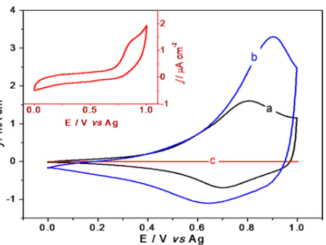
Writers: Larisa B. Arruda; Douglas M. G. Leite; Marcelo O. Orlandi; Wilson A. Ortiz; Paulo Noronha Lisboa-Filho
Keywords: Dilute magnetic semiconductors; Co-doped zinc oxide; Magnetism
Abstract: The understanding and control of ferromagnetism in diluted magnetic semiconducting oxides (DMO) is a special challenge in solid-state physics and materials science due to its impact in magneto-optical devices and spintronics. Several studies and mechanisms have been proposed to explain intrinsic ferromagnetism in DMO compounds since the theoretical prediction of room-temperature ferromagnetism. However, genuine and intrinsic ferromagnetism in 3d-transition metal-doped n-type ZnO semiconductors is still a controversial issue. Furthermore, for DMO nanoparticles, some special physical and chemical effects may also play a role. In this contribution, structural and magnetic properties of sonochemically prepared cobalt-doped ZnO nanoparticles were investigated. A set of ZnO samples was prepared varying cobalt molar concentration and time of ultrasonic exposure. The obtained results showed that single phase samples can be obtained by the sonochemical method. However, cobalt nanoclusters can be detected depending on synthesis conditions. Magnetic measurements indicated a possible ferromagnetic response, associated to defects and cobalt substitutions at the zinc site by cobalt. However, ferromagnetism is depleted at higher magnetic fields. Also, an antiferromagnetic response is detected due to cobalt oxide cluster at high cobalt molar concentrations.
See PDF: Sonochemical Synthesis and Magnetism in Co-doped ZnO Nanoparticles
DOI: 10.1007/s10948-012-1417-4




